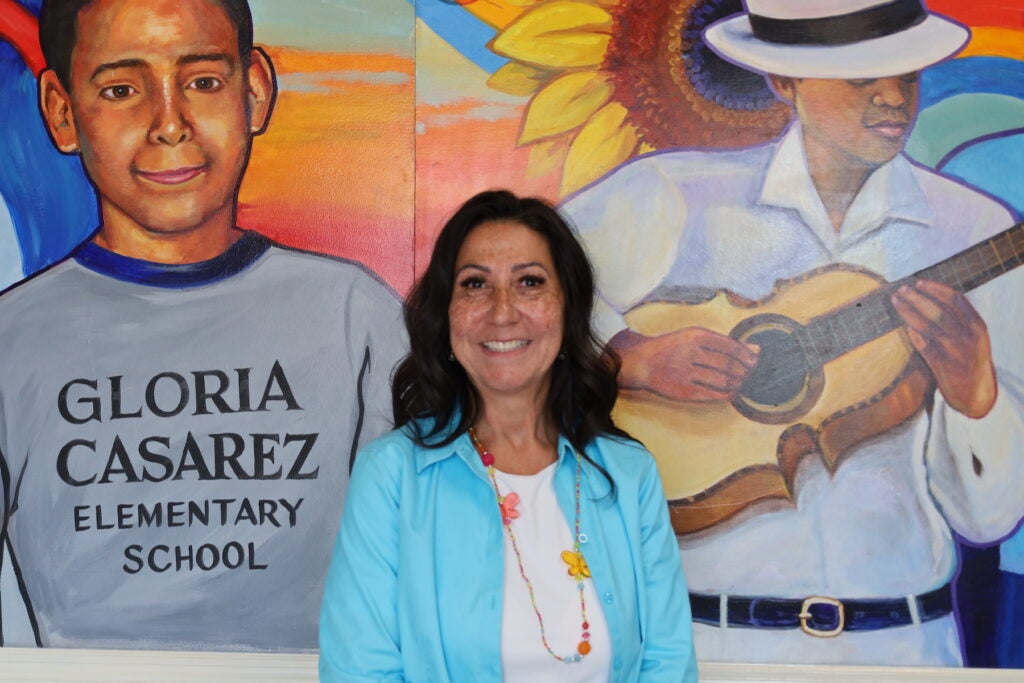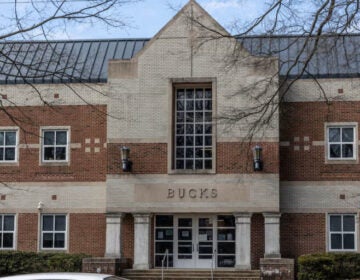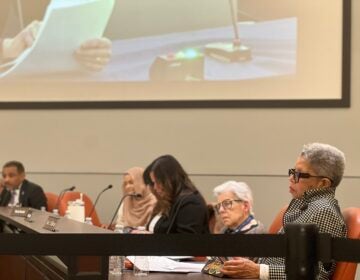As the climate warms, more Philly public schools get A/C — but dozens still don’t have enough
A high-profile donation landed A/C units in several more schools. But 63 still lack sufficient air conditioning, district officials say.
This story is part of the WHYY News Climate Desk, bringing you news and solutions for our changing region.
From the Poconos to the Jersey Shore to the mouth of the Delaware Bay, what do you want to know about climate change? What would you like us to cover? Get in touch.
Nearly a year after tens of thousands of Philadelphia students were dismissed early during their first week of school because their buildings lacked sufficient air conditioning, the School District of Philadelphia is celebrating newly cool classrooms in what will be 10 additional schools.
“There will be a lot more learning going on,” said Awilda Balbuena, principal of Gloria Casarez Elementary School in Kensington, which had 41 window units installed this summer. “It’s hard to concentrate when you’re worrying about everything else — you’re thirsty. … Even going outside has not been a relief.”
The elementary school, part of which was built in 1899, has never had air conditioning, Balbuena said. It’s one of seven schools where the district has installed nearly 200 A/C units since the spring, using a donation of $200,000 from Eagles Quarterback Jalen Hurts.
Two more schools — Castor Gardens Middle School and Roosevelt Elementary School — are in the process of receiving new air conditioners paid for by the donation, and a tenth school is in the planning stage.
But the donation hardly solves the district’s challenge of cooling decades-old buildings as the climate continues to warm. What’s more, the academic year starts before Labor Day this year.
Sixty-three district school buildings still lack sufficient air conditioning out of the more than 200 district schools, according to officials. In buildings the district considers to have insufficient cooling, some but not all classrooms may have window A/C units.
When the outdoor temperature reaches 85°F, the district starts monitoring temperatures inside classrooms. If instructional spaces are expected to reach 90°F, the district decides whether to take action, such as shifting students to virtual learning.
Last fall, inadequate air conditioning led the district to dismiss 74 schools — including Casarez — early, as temperatures reached the mid-90s in early September. Students at a dozen more schools where air conditioning malfunctioned ended up going home early later that week.
This occurred even after the first day of school was pushed post-Labor Day, in part due to concerns over equity if heat forced schools to close.
This year, students head back to school on Aug. 26, to accommodate days off throughout the year. Balbuena expects the new air conditioners will also mean fewer asthma attacks and better attendance.
“When it’s hot, parents won’t send them to school, because they know they’re going to wilt in here.”
Balbuena, who has been principal at Casarez for 15 years, said it’s also been difficult to hire teachers without air conditioning.
“This year, that was part of our hiring strategy: ‘We have A/C this year,’” she said.
Expensive electrical upgrades
A big challenge for the district has been old buildings that lack the electrical infrastructure to support A/C units in every classroom. The average age of district buildings is more than 70 years old.
At Casarez Elementary, installing window A/C units required 38 additional electrical circuits, said Paul Bonewicz, the district’s director of maintenance. The lunch room and gym still lack air conditioning.
Building electrical upgrades typically cost more than the A/C units themselves, Bonewicz said.
“There’s engineering involved, there’s all kinds of labor,” he said.
In the case of the Hurts donation, the district’s operations division is shouldering the cost of the electrical upgrades and installation.
District officials still expect to install over 300 A/C units using Hurts’ donation, but the original list of schools changed after officials discovered some would need more extensive electrical upgrades.
Of the 63 schools that still lack sufficient cooling, a handful could have air conditioning upgrades finished as early as next spring, Bonewicz said. But the majority will require capital investments for electrical retrofits. These often cost between $1 million and $1.5 million depending on the size of the school, he said.
Last summer, the district spent over $285 million to upgrade electrical and HVAC systems in 23 schools, with a focus on elementary schools. Between 2018 and 2022, the district installed central air conditioning or full window units in 82 schools.
Superintendent Tony Watlington has said the air conditioning issue is a symptom of historic underfunding and stressed the need for significant investment in district facilities.
Air conditioning could also be key to the “extended day, extended year” pilot program that Mayor Cherelle Parker has championed. The extended day programming will be offered at 20 district schools and five charter schools this school year, and for six weeks during the summer.
The district currently estimates it has around $7 billion in capital needs, a spokesperson said.

Warming temperatures
Philly’s aging school buildings are facing another challenge: the world has warmed since many were built.
Climate change is making heat waves hotter and more frequent. In Philadelphia, where buildings and pavement also trap heat, average temperatures during spring and summer have increased roughly 3°F since 1970, according to the nonprofit Climate Central.
Federal weather data shows Philly now experiences more hot days during the start and end of the school year than it did in the early 1900s.

Get daily updates from WHYY News!
WHYY is your source for fact-based, in-depth journalism and information. As a nonprofit organization, we rely on financial support from readers like you. Please give today.









